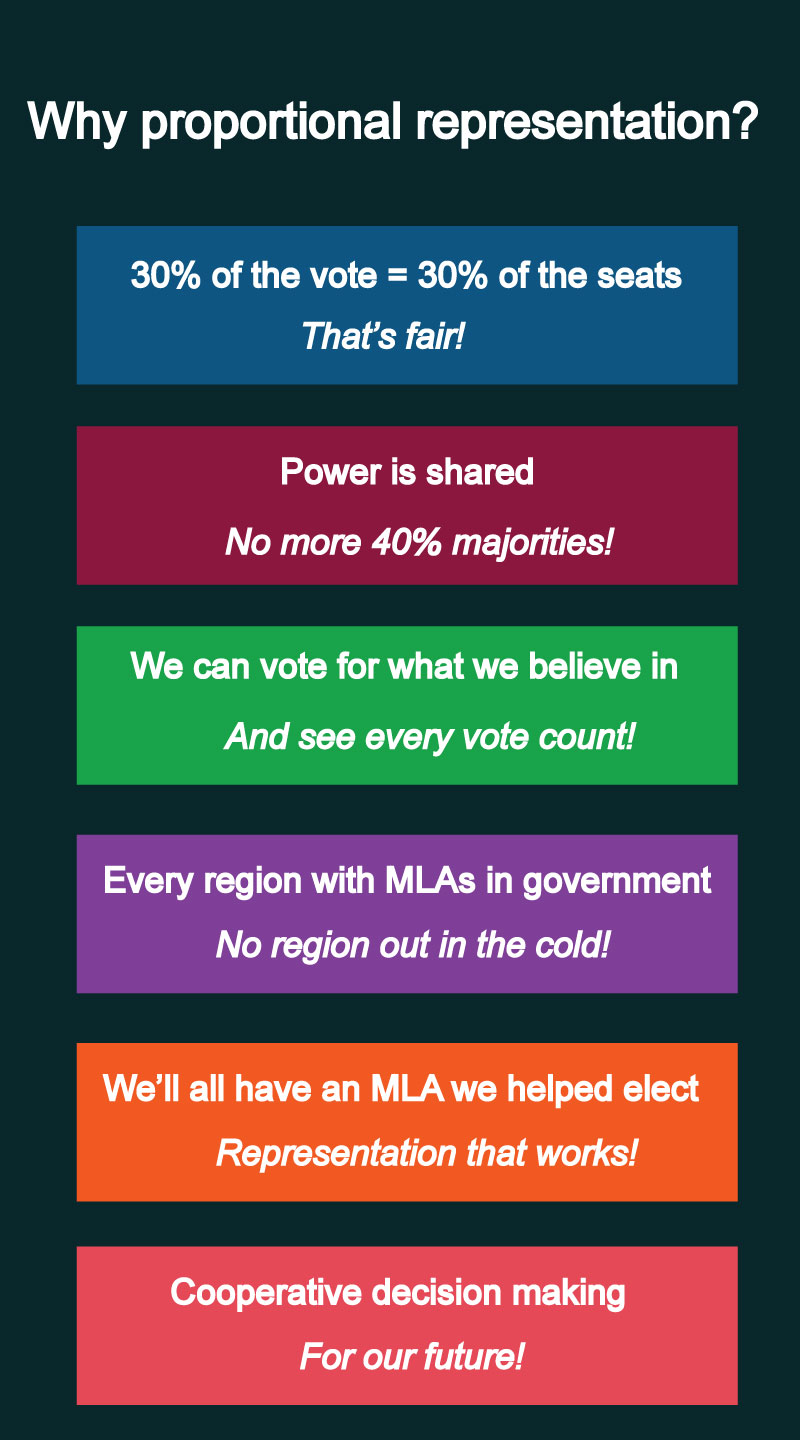Proportional Representation Systems for BC
An Introduction to Fair Voting Models for BC
QUICK LINK: Dual Member Proportional
QUICK LINK: Mixed Member Proportional
QUICK LINK: Rural-Urban Proportional (also called Flexible District PR)
QUICK LINK: Single Transferable Vote (STV)
Note: Single Transferable Vote is not on the ballot in BC’s referendum but is a key component of Rural-Urban Proportional. With Rural-Urban Proportional, STV would be used in the urban and semi-urban areas.
All of the proportional systems on BC’s ballot are a huge improvement over our current system, first-past-the-post.
a
All three systems share these attributes:
- Proportional results
- Retain MLA accountability to a specific geographic area (local or regional)
- Real names on the ballot – not just parties
- No region to have fewer MLAs than now
- No significant increase in number of MLAs
- 5% provincial threshold to get proportional seats
- Simplicity for voters
The Basics
Proportional representation is a principle underlying a voting system: People should be represented in proportion to how they voted. The percentage of seats a party has in the legislature should reflect the percentage of people who voted for them.
With made-for-BC proportional representation, almost every vote will count towards the make-up of the legislature. Almost every voter will help elect an MLA who shares their values. All regions of BC will have representation in both government and the opposition. A single party will no longer be able to attain a majority government with just 40% of the vote, and cooperation and compromise will become the norm.
There are several different ways proportional systems can be designed. Fair Vote Canada BC is pleased that that the proportional systems BC voters will choose from in the 2018 referendum are “made-for-BC” designs – maintaining strong local and regional representation, and ensuring MLAs are elected by the voters, not chosen by the parties.
This effectively eliminates any system with province-wide closed lists.

a
Gisela Ruckert, President of Fair Vote Canada BC and leader of Fair Vote Kamloops, explains the three pro rep options on the second part of the ballot to Kamloops This Week.
Background
In 2015, three parties - the Liberals, the NDP and the Greens, representing 63% of voters - promised that if elected, 2015 would be the last election under first-past-the-post.
The NDP and Greens promised to implement proportional representation. The Liberals promised to end first-past-the-post, listen to expert advice and follow evidence-based policy on electoral reform, and to "make every vote count."